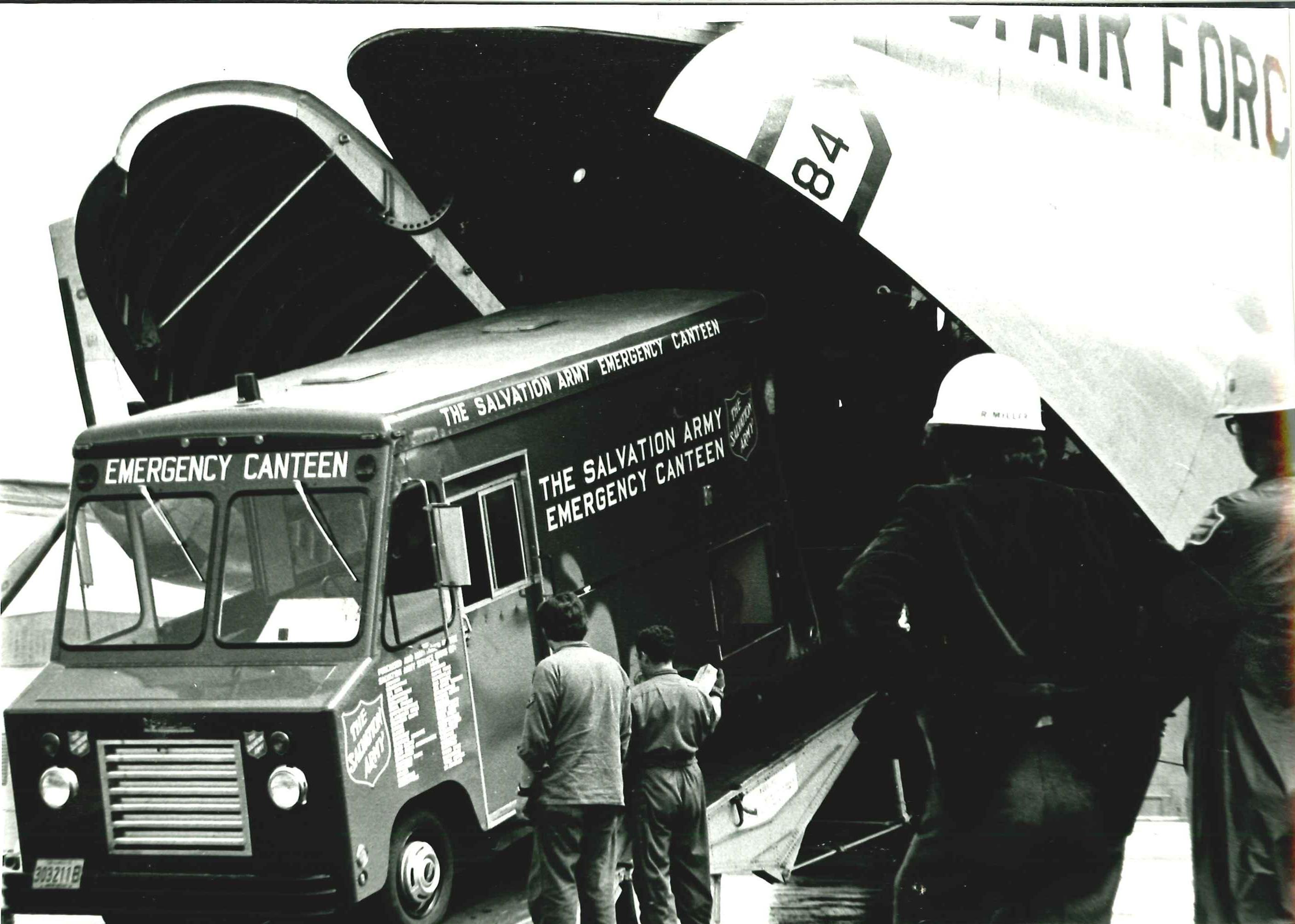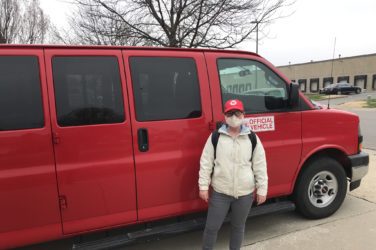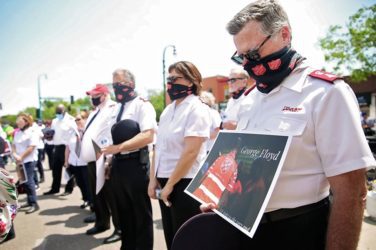“Every time I see this photo, I get misty. Because it means that the cavalry has just arrived.” – Nanci Gasiel, Museum Director
Always there when you need them, The Salvation Army USA has provided humanitarian and spiritual aid to disaster and emergency survivors for 120 years.
The Emergency Disaster Services program that we understand today developed following WWII. At the war’s end the Army found itself with a fleet of mobile canteens in needed a new mission. Helping to feed those in need during times of crisis, providing supplies, and offering spiritual comfort were already part of the organization’s DNA. It seemed perfectly natural to repurpose these WWII canteens so that they might continue to serve in times of need.
Emergency canteens were soon engaged in some familiar activities. They were on site at major fires, floods, and even urban riots to provide food, hydration, spiritual care and first aid to disaster survivors and first responders.
Prior to 1970 The Salvation Army Emergency Disaster Services operated without federal money or support. The Army was not able to muster the same amount of resources that it can today. Hurricane Camille in 1969 was the catalyst for changing the status of The Salvation Army. In the storm’s aftermath, Senator Birch Bayh led a team to investigate the disaster response. The committee’s findings were incorporated into Public law 91-606 which was passed in 1970 and recognized The Salvation Army as a bona fide emergency relief agency.
Now, when a national disaster is declared The Salvation Army has the full resources of the federal government at its disposal. This includes military resources, manpower and equipment, food from government agencies, access to government buildings, housing, and more. The Army’s position as a major disaster assistance agency was further strengthened by The Disaster Relief act of 1974.
This photo helps to illustrate the difference federal recognition made in the Army’s ability to provide aid following a disaster. It shows an emergency canteen being unloaded from a United States Air Force cargo plane after the 1972 Black Hills Flood in Rapid City, SD. Before 1970 The Salvation Army could not command the sort of aid shown in this image. They might be able to get state level resources, but the Air Force delivering canteens to a disaster site was out of the question. Becoming a federally recognized emergency relief agency means that The Salvation Army can pull resources from anywhere in the country for a federally recognized disaster and that the resources will arrive in time to have a significant impact on the lives of survivors and emergency responders. The Salvation Army can deploy resources, be they canteens, supplies, or people wherever they are needed. This may be anywhere in the country, and with approval from The Salvation Army International Headquarters approval it can be anywhere in the world.
It is reassuring to know that The Salvation Army is there in times of need and always ready to help.





